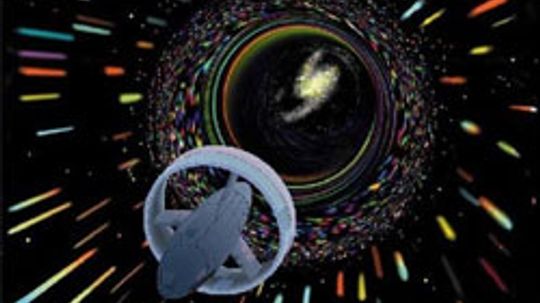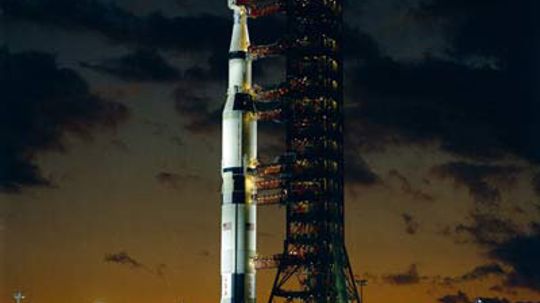Space Transportation Systems
Space Transportation Systems (STS) are the systems and architectures that deliver payloads and humans to outer space. Learn about space shuttles, rockets and other spacecraft.

Tall Whites: The Classic Extraterrestrial Archetype

The Zoo Hypothesis: Are Aliens Watching Us Like Animals in a Zoo?

Communicating With Aliens Is Hard. Communicating With Alien AI Could Be Harder

10 Types of Stars Blazing and Collapsing in Our Universe

7 Types of Eclipses: Lunar, Solar and ... Hybrid?

Why a Geomagnetic Storm Makes for Pretty Skies and Tech Scares

What Is a White Hole? Does the Cosmic Phenomenon Exist?

10 Best Ideas for Interplanetary Communication

How can the moon generate electricity?

Is an Astronaut Stuck in Space a Rare Occurrence?

What Really Happened to Yuri Gagarin, the First Man in Space?

Apollo 11 One Giant Leap For Mankind

15 Famous Astronauts Who Expanded Our Universe

2023 India Moon Landing Was World's First at Lunar South Pole

Quiz: Apollo 11, the First Moon Landing
Learn More
If you asked, most science fiction fans could probably name their favorite spaceships from television or cinema. Whether it's the USS Enterprise or an Imperial Star Destroyer, they're all pretty equal on the imaginative scale. However, when it comes to sheer speed, there are some fictional spaceships that are clearly faster than others. The Milano [...] The post The Fastest Fictional Spaceships appeared first on Goliath.
By Wes Walcott
In honor of Douglas Adams and galactic hitchhikers everywhere, we submit this list of 10 spacecraft that we hopelessly pine for. Mindboggingly beautiful!
By Robert Lamb
Driving on Earth is tough enough. What happens when you throw in craters, unexpected solar events and backseat driving from your fellow astronauts while you bump over the moon?
Advertisement
The science of rocketry is extremely complex and, at times, dangerous. This collection of images highlights the tech that gets all that science off the ground.
Imagine waking up in the morning, looking out your window and seeing the planet Earth below you. What would it be like to live in space? Find out all about the International Space Station.
In its nearly 30-year history, the space shuttle program has seen exhilarating highs and devastating lows. Learn all about the space shuttle program.
What is a solar sail? How can you use sunlight to move a spacecraft in outer space? In this article, HowStuffWorks will show you how solar sail technology works, take an in-depth look at the Cosmos-1 mission and find out what solar-sails mean for future space travel.
By Kevin Bonsor
Advertisement
What is a solar sail? How can you use sunlight to move a spacecraft in outer space? In this article, HowStuffWorks will show you how solar sail technology works, take an in-depth look at the Cosmos-1 mission and find out what solar-sails mean for future space travel.
Traveling faster than the speed of light, you could go anywhere in minutes -- at least, in the "Star Trek" universe. Is this sci-fi device theoretically possible?
By John Fuller
The Apollo program was initiated with the goal of landing a man on the moon. What was the spacecraft that helped make this giant leap for mankind?
Project Gemini played an important step in NASA's efforts to put a man on the moon. How did the Gemini spacecraft carry two astronauts into space and back safely?
Advertisement
At a drag race, I once saw a rocket car that was supposedly powered by spraying hydrogen peroxide on a silver mesh. The resultant reaction produced huge amounts of pure white smoke and apparently enough thrust to propel the car rapidly down the track. Does hydrogen peroxide really react with silver that way?
In science, we are learning about the atmosphere. It protects us from meteors because it burns them up. So, why doesn't the space shuttle burn up?
Believe it or not, the hardest part of space exploration is getting a spaceship off the ground. Explore the basics of propulsion and learn about both solid-fuel and liquid-fuel rocket engines.
In 1984, President Ronald Reagan had a vision for a permanently inhabited space station. Today that vision is a reality we know as the International Space Station.
Advertisement
NASA's Spot the Station feature will text or email you when the ISS is about to be overhead. And you won't even need a telescope to see it!
Visionaries have proposed various ways to get into space without using large rockets for propulsion, such as building a space elevator or harnessing magnetic levitation.
















